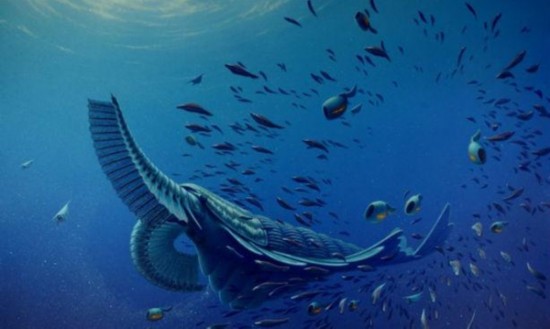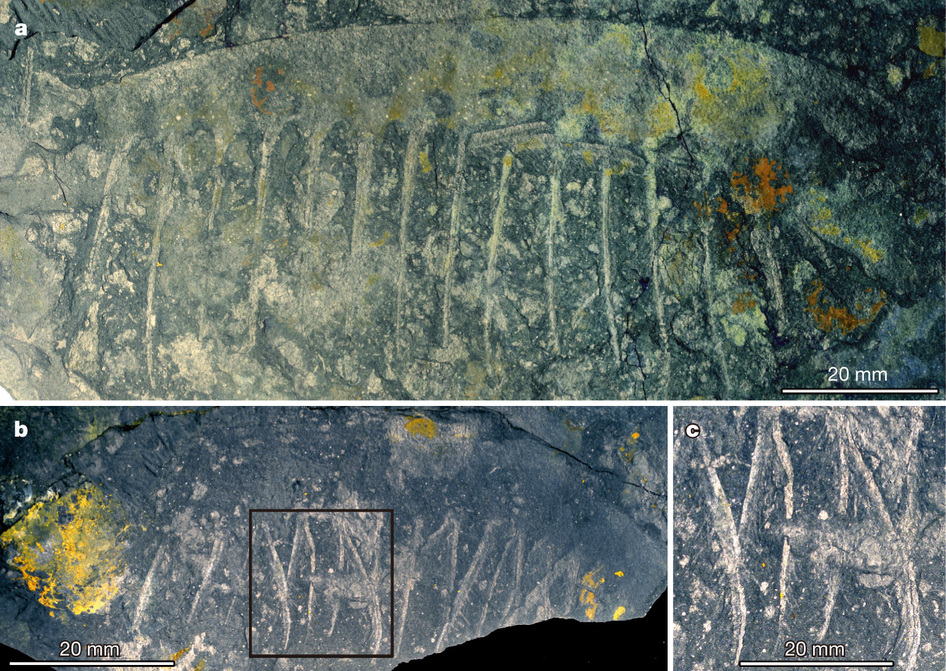


Half a billion years ago, fierce shrimp-like predators patrolled the world's oceans, using sharp claws to snare their prey. But at least one member of this family, the anomalocarids, was more of a gentle giant, according to an analysis published today in Nature1.
Fossils unearthed in northern Greenland in 2009 and 2011 suggest that the species, Tamisiocaris borealis, used wispy, comb-like frontal appendages roughly 12 centimetres long to sweep up plankton as small as 0.5 millimetres. Like its brethren in the genus Anomalocaris — which means weird shrimp — T. borealis thrived 520 million years ago, during the Early Cambrian period.
Researchers suspect that the animal evolved from grasping large prey to filtering smaller prey in an evolutionary arms race with other top predators. By changing its feeding strategy, T. borealis no longer needed to compete with the fiercest animals in the ocean for its food supply, says study co-author Jakob Vinther, a palaeobiologist at the University of Bristol, UK. This way, the animals “aren’t really a threat to anyone, and they don’t feel threatened either”, he says.
Such behaviour has evolved several times in Earth's history, all during periods when marine food supplies were abundant, Vinther adds. But T. borealis is the earliest-known large, swimming filter-feeder.
Earlier fossil evidence has shown claws that are adapted for spearing or catching animals and makes a clear case for anomalocarids being predatory, says Robert Gaines, a geobiologist at Pomona College in Claremont, California. But the fine, feather-like spines of T. borealis are “a classical adaptation for filtering small plankton or zooplankton”, he says.
http://www.nature.com/news/prehi ... ws-for-nets-1.14934
| 歡迎光臨 化石講場-Fossils Board (http://www.fossilshk.com/forum/) | Powered by Discuz! 4.1.0 |